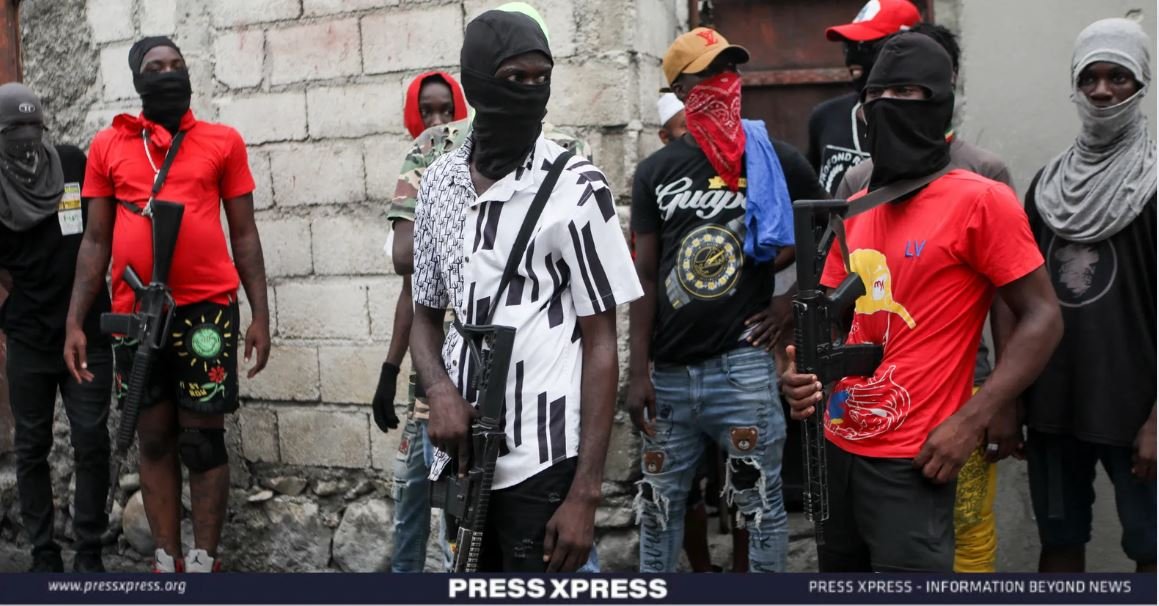Haiti’s crisis highlights the pressing need for decisive action and global cooperation. To avert further violence and instability, concerted efforts are essential to pave the way for peace, democracy, and prosperity for its struggling population
As Haiti descends once more into violent chaos, the pervasive imagery of armed gang members roaming the streets of Port-au-Prince with high-powered weaponry has become distressingly familiar.
However, what may surprise many is that these weapons are not products of Haiti’s own manufacturing capabilities, which are virtually nonexistent in the realm of firearms and ammunition. Instead, they predominantly originate from the United States, with a significant portion being trafficked into Haiti from states with lenient firearm laws, notably Florida, as reported by The Guardian on 14 March.
The US Connection: A Deluge of Firearms
The influx of arms from the US has equipped Haiti’s gangs with a formidable arsenal, surpassing the capabilities of the country’s beleaguered and ill-equipped law enforcement agencies. According to estimates by Haiti’s Disarmament Commission in 2020, the country harbored potentially half a million illicit small arms, with a mere fraction legally registered. This number has likely escalated in recent years due to intensified trafficking operations.
You can also read: Win Rozario’s Death: Is America Failing its Immigrant Communities?
A substantial portion of these illicit firearms, as noted by security expert Robert Muggah, are acquired through straw purchases in US states with lax gun regulations, such as Florida, Arizona, Texas, and Georgia. These straw purchasers, acting on behalf of smugglers, exploit regulatory loopholes to acquire weapons, which are then smuggled into Haiti. Recent investigations have exposed the relative ease with which traffickers operate, often utilizing commonplace communication platforms like WhatsApp to orchestrate transactions.

Despite efforts to bolster enforcement, including heightened homeland security operations and the enactment of stricter laws targeting straw purchases, the results have been modest at best. Both Haitian and US authorities struggle to intercept the vast volume of firearms entering Haiti clandestinely. The Haitian government’s customs and border forces are notably under-resourced, further exacerbating the challenge of stemming the illicit arms flow.
Proliferation of Trafficking Routes
The proliferation of trafficking routes, as highlighted in UN reports, underscores the complexity of the issue. These routes extend from Florida into key Haitian cities and include land smuggling routes across the Dominican Republic border. Additionally, clandestine airstrips, initially established for humanitarian purposes following the 2010 earthquake, now serve as conduits for illicit arms shipments, facilitated by lax monitoring and oversight.
As long as there remains a lucrative demand for firearms and ammunition, driven by criminal gangs across the Caribbean, the trafficking of weapons from the US to Haiti is likely to persist. Addressing this multifaceted challenge requires a concerted effort involving both supply-side interventions, such as enhanced regulatory measures and enforcement, as well as demand-side strategies aimed at tackling root causes of violence and instability.

Recent Developments Unveiled
The most recent wave of violence erupted on February 29, coinciding with Prime Minister Henry’s diplomatic mission to Kenya, where he sought UN-backed assistance to combat the rampant gang activity. As Henry sought support abroad, the streets of Port-au-Prince echoed with gunfire, accompanied by the declaration from notorious gang leader Jimmy ‘Barbecue’ Cherizier that his coalition, G9, was uniting with other factions to demand Henry’s resignation.
Acting in Henry’s absence, Finance Minister Patrick Boivert declared a state of emergency on March 3, implementing an evening curfew in a desperate bid to restore order. However, tensions continued to escalate, with Cherizier ominously warning of an impending civil war and potential genocide if Henry failed to step down promptly.
Prime Minister’s Whereabouts
Prime Minister Ariel Henry found himself effectively stranded outside of Haiti due to the turmoil gripping the nation, with its main international airports shuttered by violence. After being denied entry into the Dominican Republic, Henry sought refuge in Puerto Rico, where he remains under the watchful eye of international observers, including the United States. While U.S. officials have refrained from directly urging Henry to resign, they have emphasized the urgent need for a political transition to restore stability to Haiti.
Roots of the Crisis
Haiti’s descent into chaos finds its origins in systemic government corruption and longstanding political instability. Enduring a cycle of violent unrest for two decades, Haiti’s woes were compounded by catastrophic earthquakes in 2010 and 2021, further crippling an already fragile infrastructure. The assassination of then-Prime Minister Jovenel Moïse in 2021 marked a pivotal moment, plunging the nation into deeper turmoil from which it has struggled to recover.
Prime Minister Henry’s failure to hold timely elections as promised only served to exacerbate the simmering tensions, ultimately igniting the current wave of violence and upheaval.

The Enigmatic Figure of Jimmy “Barbecue” Cherizier
At the center of Haiti’s turmoil stands Jimmy “Barbecue” Cherizier, a former police officer turned notorious gang leader. Leading the G9 Family and Allies federation, Cherizier commands significant influence and has orchestrated devastating attacks that have further destabilized the nation. His grip on power underscores the profound challenge facing Haitian authorities as they grapple with an intricate network of gangs that wield considerable military might and financial resources.
Gangs: A Formidable Force
Haiti’s landscape is marred by the presence of approximately 200 gangs, with 23 main factions operating within the metropolitan area of Port-au-Prince alone. Over the years, these criminal enterprises have expanded their control, now holding sway over an estimated 80% of the capital. Empowered by smuggled firearms and lucrative ransom payments from kidnappings, these gangs have evolved into formidable entities, eclipsing the capabilities of the beleaguered state security apparatus.
The proliferation of high-caliber weaponry within gang ranks has fundamentally altered the dynamics of violence in Haiti, rendering the state increasingly impotent in its efforts to contain the chaos.
Conclusion
As Haiti grapples with a crisis of unprecedented proportions, the path to stability remains fraught with uncertainty. With its political leadership in disarray and criminal gangs reigning supreme, the road ahead appears daunting, fraught with immense challenges and profound implications for the future of the beleaguered nation.


